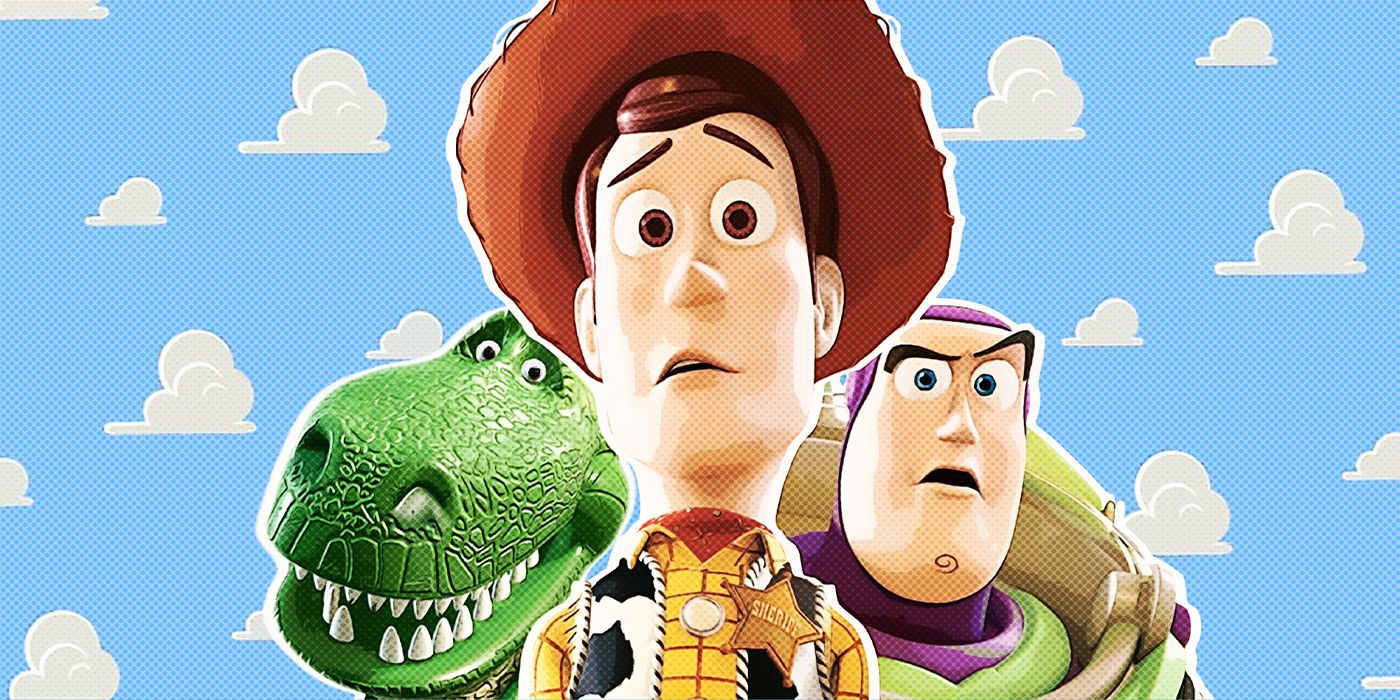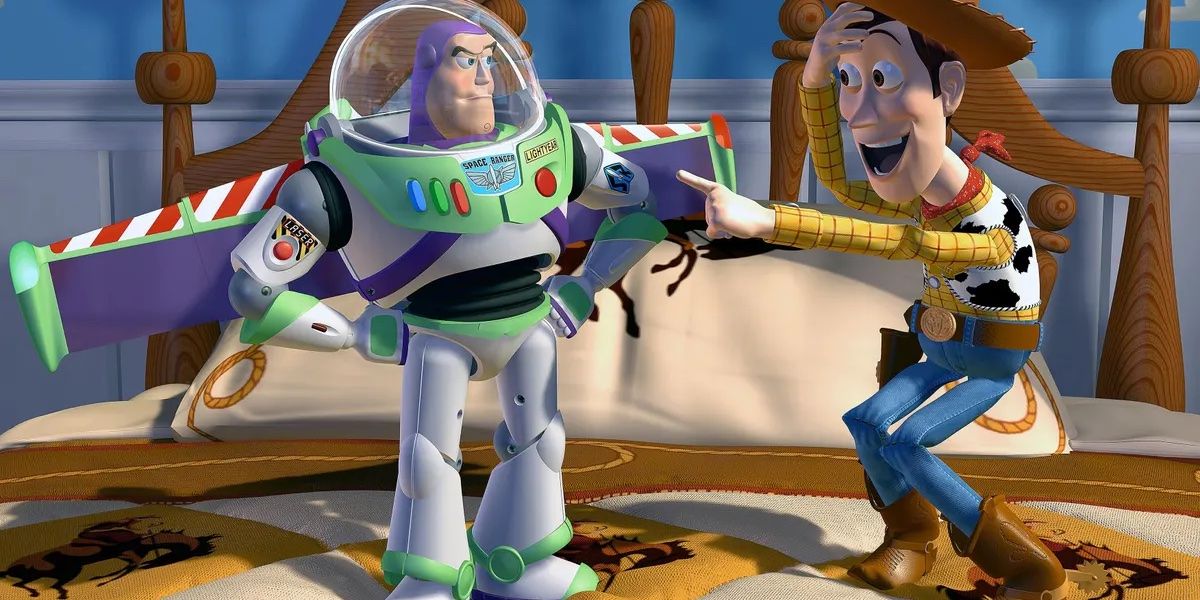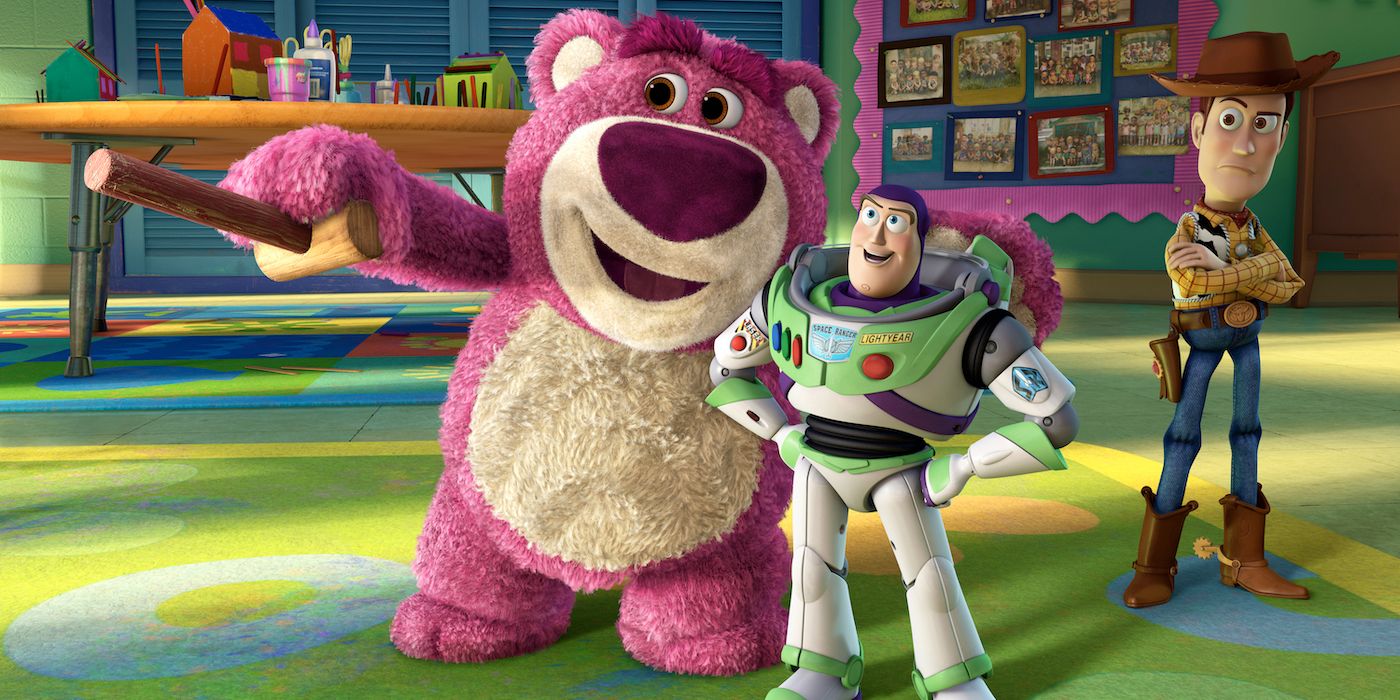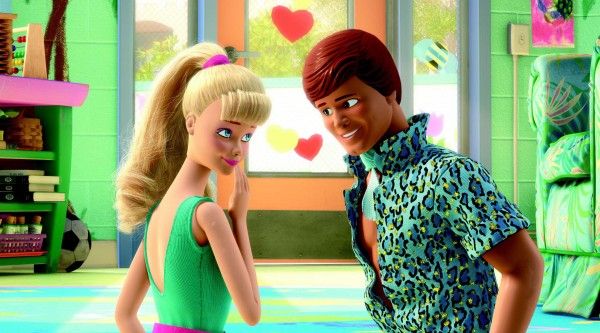When Lightyear hits theaters this month, it'll truly take the Toy Story franchise to infinity and beyond — or, to paraphrase another famous sci-fi franchise, a new frontier. The film will feature the origin of Space Ranger Buzz Lightyear (Chris Evans), who inspires a multimedia line including an action figure voiced by Tim Allen. But this isn't the first time the Toy Story films have undergone a change. In fact, the original film could have been a far different endeavor from the one an entire generation of fans fell in love with.
The original draft of Toy Story was written by Pixar founders John Lasseter, Pete Docter, and Andrew Stanton, and featured a very different character from Lightyear or Woody (Tom Hanks). In fact, Lightyear initially wasn't in the picture: the Pixar founders wanted to center the story on the lead of their first-ever short film Tin Toy. The lead, a wind-up tin drummer appropriately named Tinny, would have wound up going on a road trip with a wooden dummy. Eventually, the two would have made it to a kindergarten classroom, where they could be played with to their heart's content.
These plans ended up being scrapped when Disney's then head honcho Jeffery Katzenberg took issue with the script. Katzenberg told the Pixar crew that the script should be reworked into a buddy film, and they went back to the drawing board. This time, elements that would end up in the final film took root: Tinny and the dummy would come to blows as Tinny became his owner's favorite toy, and their misadventures included a pit stop at a pizza restaurant (which would eventually become Pizza Planet) and a boy who mutilated toys (this eventually grew into the role of Andy's next-door neighbor Sid Phillips, who created Frankenstein-esque beings from the wreckage of toys he blew up or pulled apart.)
But there was still the matter of the ventriloquist dummy, who was now referred to as "Woody". Woody was a tyrant - he ruled over the other toys in Andy's room with an iron (or rather, wooden) fist and even had a scene where he verbally berated Slinky Dog. But the worst moment was at the film's halfway point. When Woody's jealousy of Buzz reaches a breaking point, he attempts to knock Buzz into the crack behind Woody's desk and ultimately ends up knocking him out of the window. In the original script, Woody pushed Tinny out of the window on purpose. Eventually, when Disney execs saw test footage they were less than pleased and Woody eventually evolved into his cowboy form.
Tinny also underwent a change, since Lasseter eventually decided that a wind-up doll was too "antiquated." At first, Buzz was a military action figure - created because Hasbro had turned down Pixar's request to use a G.I. Joe action figure. His name also changed: at first he was Lunar Larry, and then he eventually became Buzz Lightyear. Buzz was initially slated to be voiced by Billy Crystal, but Crystal ultimately turned down the part; it went to Allen after a lengthy casting process. Crystal would ultimately join another Pixar project when he voiced Mike Wazowski in Monsters, Inc.
There were other characters from the original script that would ultimately appear in future Toy Story sequels, albeit in different forms. Tinny and Woody would have been brought at an auction by an "anal retentive" man who put them in glass cases with other toys. Tinny also encounters an old, gruff teddy bear who tells him to enjoy the time he has with his owner, as kids grow up and pursue other passions. Both of these characters would ultimately evolve into the antagonists of Toy Story 2 and Toy Story 3. The "anal retentive" man became Al McWhiggin (Wayne Knight), owner of Al's Toy Barn; Al steals Woody at a garbage sale and intends to sell him to a collector in Japan. The gruff teddy bear became Lots O' Huggin' Bear, or "Lotso" (Ned Beatty), who grew resentful after feeling like his owner Daisy abandoned him. Lotso also resided in Sunnyside Daycare, bringing the final destination of the original screenplay to life. However, instead of paradise, it was a living hell as the toys were subject to kindergartners' unruly whims.
The screenplay finally snapped into place when Joss Whedon boarded the PIxar development team. Whedon added multiple elements that helped shape Toy Story into the film it ultimately became, including Rex the dinosaur and the concept of Buzz believing that he was actually a Space Ranger instead of a toy - prior to this, he was a cheerful yet dim-witted Boy Scout. However, one of Whedon's additions didn't make the cut. Whedon wrote a role for Barbie in the film, describing his take on the doll as similar to Ellen Ripley in Aliens. Mattel didn't let Pixar use the Barbie license in their film, resulting in the part being rewritten for Bo Peep (Annie Potts).
Once again, the success of Toy Story opened up doors for the sequels that had been previously closed. When Buzz and his friends break into Al's Toy Barn to try and rescue Woody, they encounter a row full of Barbies; a "Tour Guide Barbie" even offers to chaperone them around the store. Later, Pete the Prospector (Kelsey Grammar) is stuffed into a girl's backpack which happens to contain a Barbie doll - who sports glitter and marker symbols thanks to her owner. In Toy Story 3, a Barbie doll owned by Andy's sister Molly joins the toys as they head to Sunnyside. There she meets and falls for a Ken doll (Michael Keaton) but ends up playing a role in the other toys' rescue. Barbie is voiced by Jodi Benson, who is no stranger to Disney films having voiced Ariel in The Little Mermaid.
Ultimately, Toy Story's changes were for the best - the film remains a shining example of the buddy comedy, and its success opened the doors for Pixar to create all sorts of films, including recent hits like Soul and Turning Red. And bringing things full circle, Tinny briefly appears in Toy Story 4 — a reminder of Pixar's beginnings and how things could have been much different for the Toy Story films.




